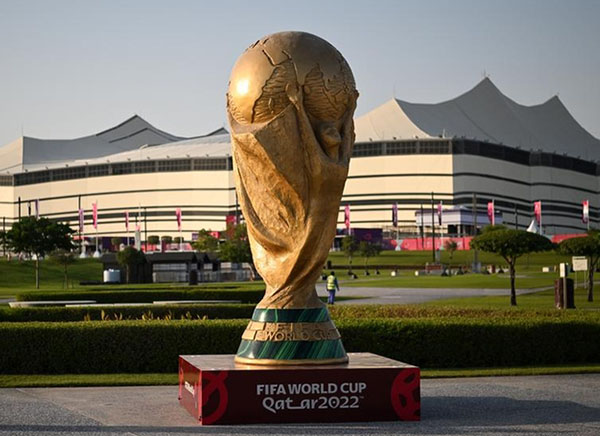
The wait is over for football fans around the world as FIFA World Cup Qatar 2022 starts on November 20, 2022. The opening ceremony will take place before the Group A match between the host country Qatar and Ecuador.
Al Bayt Stadium, which has a capacity of 60,000, is located 40 kilometres north of Doha and will host the opening ceremony. Named and designed after the tents used by nomads in the Gulf, the Al Bayt Stadium is the farthest venue from central Doha but also one of the biggest and has a retractable roof.
Being the host nation to FIFA, preparations for one of the biggest global football event does mean a lot of implementation of technologies that create a better experience for fans as well as create smooth gameplay.
Let’s look at some of the technologies that are implemented
= SEMI-AUTOMATED OFFSIDE TECHNOLOGY: The newest innovation in football that is being implemented is the SAOT. The tech acts as a tool for officials to make quick and accurate decisions regarding offsides. It involves a total of 12 cameras with dedicated tracking capabilities along with 29 data points for each player. These data points are spread across a player’s body to make relevant offside calls. The tech was used in the FIFA Arab cup where it helped the officials make better offside decisions in a short period.
= VIDEO ASSISTANT REFEREE (VAR): Another tech that is implemented to help officials during matches. It was laid down in the Laws of the Game in 2018 and was used in the 2018 FIFA world cup. This technology helps the referees clear errors or get more accurate decisions regarding goals or offences leading to a goal, penalty decisions, red card incidents and mistaken identity. Supported by the VAR team, it is located in a centralised video operation room in Doha. The VAR team gets access to around 42 broadcast cameras, of whom 8 are super slow cameras and 4 are ultra slow cameras allowing slow replays for various judgements.
= GOAL-LINE TECHNOLOGY: This technology has been in the works for quite some time now since it was first implemented for use in 2014. What the technology proceeds to clarify is whether the ball fully crossed the goal line. The technology is supported by a system of 14 high-speed cameras placed on the catwalk of the stadium. It was decided to be put in the Laws of the Game and is now required to be present in all stadiums, where it is to be tested by independent test institutes before the start of the tournament. The referee also checks the system before the match and sees if it is correctly calibrated.
= FIFA PLAYER APP: Build in cooperation with FIFPRO the FIFA Player app revolutionizes the way players look at their performance. The app allows players to look into individual player-performance data shortly after each match. Players would be able to get insights into their on-field performance through the app. The app gives detailed info on various data metrics like Enhanced football data metrics, Physical performance metrics and Enhanced Football Intelligence metrics. This information is synced with game footage so that players can watch every significant moment of their performance in-depth from various camera perspectives.
= FOOTBALL DATA ECOSYSTEM: The FIFA Football Data Ecosystem is a sophisticated network of data processors, distribution layers, and data sources that provide reliable and high-quality data to all pertinent stakeholders. The platform’s major goal is to present data from many sources to the appropriate stakeholders in a perceptive, user-friendly fashion so that it may replace other sources as FIFA’s exclusive source of performance statistics.